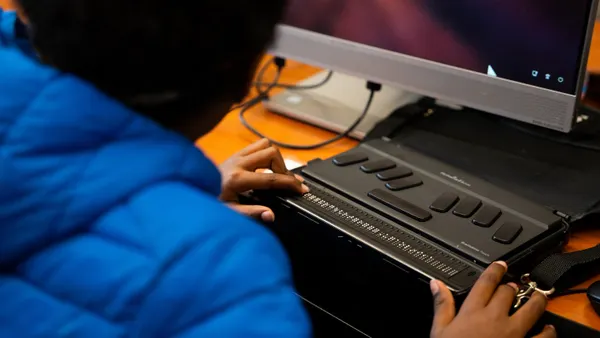Dive Brief:
- Incorporating video games into K-12 curriculum can make learning more engaging and active, as well as shift the classroom to a more learner-centered environment, according to William Watson, a professor of learning design technology at Purdue University.
- “Games are created to promote engagement,” he said. “So when we can take that sort of engagement and connect it to learning outcomes that we want to happen, then we can really push that sort of learning.”
- Video games are the dominant form of media that most students today, regardless of age or gender, are used to engaging with. A 2024 Pew Research Center survey of U.S. teenagers found that 85% reported playing video games, and about 4 in 10 do so daily.
Dive Insight:
Watson, who is also director of the Purdue Center for Serious Games and Learning in Virtual Environments, teaches a course on educational video game design and tells his students that their competition is not the latest popular entertainment video game, but rather, lectures and textbooks.
Video games outshine any other form of media in terms of time on-task, said Watson, which means people are more willing to play games than they are to do other activities like reading a book or watching a movie.
When incorporating video games into the classroom, educators first need to identify their learning objectives and determine how to meet those objectives in an engaging and student-centered way, said Watson. He also emphasized that, like anything new — especially when it involves technology — there will be challenges.
If technology is the barrier, for instance, board games are a great alternative. Watson added that there are even board games based on particular literary pieces.
In terms of designing video games for use in the classroom, Watson recommended starting with narrative-based games, as freely available toolkits are available online.
“The barriers to integrating game-based learning, whether it's designing your own game or implementing available games, are really smaller than they've ever been before,” said Watson.
Learning also doesn't have to be limited to taking place only within the game, he added. Another strategy is to have students write alternative scenes or outcomes for classic novels. For example, if a class is reading “Sense and Sensibility,” an assignment can be to work in groups to write about the different outcomes they envision that could have happened in that novel.
Beyond educational video games, entertainment video games that students might be more familiar with can also serve as a “hook” for learning, Watson said. He explained that educators have used “Halo” in the past to teach vocabulary and journaling by utilizing the game’s world to create comic books for students. These comics introduced vocabulary, and then students were tasked with creating their own stories.
“It's amazing the different content that's out there that can engage students around this sort of thing and put them in the role of creators and analysts, rather than just passive consumers of things that you're feeding to them,” said Watson.
Collaboration is another great resource, Watson said. He recommends that educators reach out to others interested in similar topics and find like-minded instructors who want to pursue that path, whether in their schools or online communities.
“You don't have to build everything from scratch,” said Watson. He advises finding support and being willing to explore while understanding that things may not work out on the first try. “That doesn't mean you stop trying.”
Watson ultimately emphasized that video games are a great tool, but also not the be-all, end-all. They serve as a hook to get students engaged, but it is also important to push the learning beyond the game, he said.













